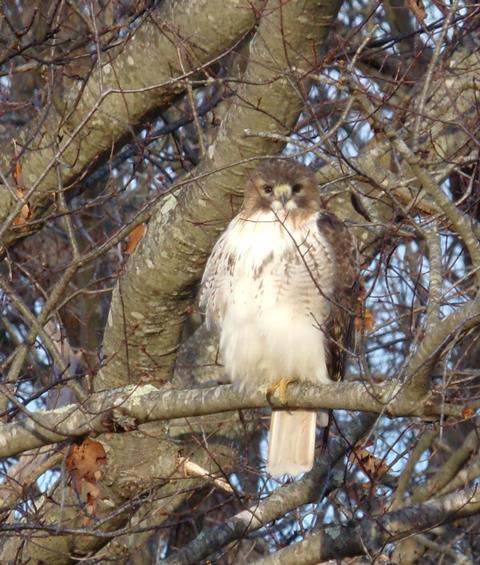Just seconds before we snapped this picture, we took another one, but it came out blurry. A second Red-tailed Hawk, a male, was perched next to this larger female. But he spooked and flew off, leaving us with a view of this magnificent bird.
This up-close view gives us an opportunity to look at a few things. Typically, “Red-tails,” as birders call them, are easily identifiable from a distance because of their belly bands, a row of darker feathers that run across their guts. At this time of year, though, the band fades, as the birds – meaning many species – tend to push their feathers out for warmth.
It might seem counter-intuitive to us to do so. When we’re cold, we hug ourselves. Birds, though, can extend their feathers outward and make the colder air circulate farther away from their skin. It leads to a lot of misconceptions about birds being “fatter” in winter. They’re not fat. They’re not even big-boned.
But, back to that second Red-tail. The fact that the two of them were on the same branch is very telling. Although we think of spring as the time for love to blossom anew, for Red-tails here in New England, it’s this time of year, around January 1. This is most likely a courting pair, right across the street from the Science Center on Jacobs Lane. They’ll soon be building a nest, mostly because a pair of Great Horned Owls stole the one they used last year. If all goes well, by March 15, they will have eggs. By May 10, there will be new Red-tails in our world. Recently, success has been the watchword, as Red-tailed Hawks have become the most popular hawk in the United States, and the most widely distributed in Massachusetts.
